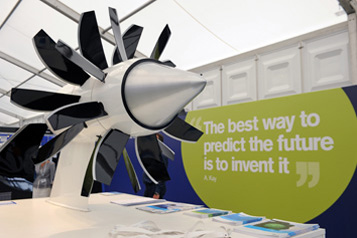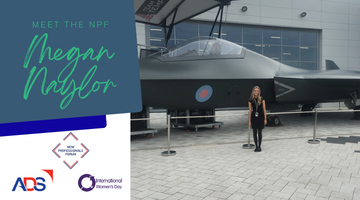
The SS. Great Britain
Imagine being in New York in 1845. If on 10th August you happened to be standing on the Manhattan shoreline looking out to sea, among the common wooden sailing ships, you would have seen an iron monster. A vessel bigger than any other ocean liner of the time, propelled not by sails, but with a screw propeller hidden beneath the waterline, travelling as if by enchantment towards the docks.
What your historic self is seeing is of course Isambard Kingdom Brunel’s SS. Great Britain as it completes its maiden voyage across the Atlantic. The SS. Great Britain may not have been the first iron hulled ship. Nor was it the first to be propeller driven. But, at the time of its construction, it was both the only ship to combine these two technologies, as well as being the longest passenger ship of its time.
As a Bristolian, I often have the opportunity to walk through Bristol’s Harbourside district where the SS. Great Britain is now a museum ship. Occasionally I get lost in this imagination. What a sight it must have been.
The question I want to answer in this blog is, while iron hulls, and propeller driven technologies were novel for the time, and the ship must have been awe‐inspiring for the first to have witnessed it, was the SS. Great Britain an example of disruptive innovation?
What is disruptive innovation?
For a technology or business practice to be disruptive it has to be more than just an upgrade to current technology. Being novel isn’t enough either. Disruptive innovation needs to dramatically increase market share for the disruptive product, displacing its competition. This can be done in a number of ways:
- Displacing a current technology in the marketplace.
- Displacing a current manufacturing process.
- Displacing a current business practice.
Sometimes disruptive innovation happens as a result of more than one of the above.
The often quoted archetype for disruptive innovation is Henry Ford’s Model T Automobile. The Model T ended up displacing not underlying technology, but both the prevailing business practice in sourcing and reusing parts, a concern for human factors, and most famously the manufacturing process in utilising assembly line manufacturing. How are the technology, manufacturing process and business practices displaced?
- Providing the customer with a significantly more capable product.
- Providing the customer with a similarly capable product at a much lower cost.
- Providing the customer with a similarly capable product in a much shorter time.
In the case of Henry Ford, manufacturing time was reduced by about a factor of ten, which in turn significantly reduced the cost, making cars affordable to the middle class market for the first time. This rapidly displaced horse and cart and other lightweight motor‐vehicles as the primary mode of transport.
Was the SS Great Britain Disruptive? Did it provide the customer with a more capable product?
While it could carry slightly more passengers than the wooden sailing ships, the SS Great Britain’s Atlantic crossing time was unremarkable. Did it provide the customer with a similarly capable product at a lower cost? The SS. Great Britain ended up being more than 50% over budget, and more expensive than other Atlantic crossing ships of the time. Did it provide the customer with a similarly capable product in a shorter time? Again no. On the contrary it was delivered late taking 9 months longer than planned due to the addition of the new propulsion technology.
The SS. Great Britain was a brilliant ship, but from a business prospective it was a failure. The Western Steamship Company, the company which commissioned her, was forced to sell for a fraction of the development and manufacturing cost a mere two years after her maiden voyage. For this reason, this ship didn’t displace the competition of its time; wooden sailing ships. Rather than being an example of disruptive innovation, the SS. Great Britain is best viewed as a progressive prototype, which spearheaded a smooth, but non‐disruptive, transition to metal propeller driven ships over the following decades.
Final thoughts
I have spent a number of years working in novel technology development. The ‘holy grail’ of this area of work is discovering and developing a technology, which isn’t just novel and innovative, but is also disruptive. Even if that disruption is to the company’s core business.
This is because truly disruptive innovations offer a way for small research enterprises to break into a market previously dominated by a large company. The only way for the larger companies to guard against this loss of market share is to be serious about developing disruptive innovation themselves.Predicting which innovations will be disruptive, which will be progressive, and which will fall by the wayside, is a true and rare skill. An employee who has developed the skills to accurately distinguish between a Ford Model T, and SS. Great Britain, type innovation offers a huge amount of value to a company, both large and small.
This is a skill anyone can learn. Why not start practising in your early career by identifying innovative practices and trying to predict, on the measures discussed in this blog, whether or not a new innovation will disrupt a current technology, manufacturing or working practice?
This post was written by Martin Suitters





